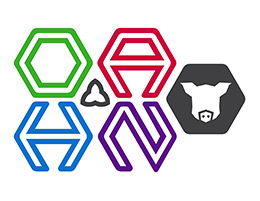Ontario Animal Health Network (OAHN) Swine Network Quarterly Veterinary Report
Disease Round Up: Information from Ontario that you Need to Know
This section features disease information on the top concerns from across the province, including reports from veterinarians, laboratories, industry, and government groups.
Influenza
From Ontario swine herds, H1N2 (34 %) is the dominant strain of influenza A in swine over the past year. H1N1 (24 %) is in second place and H3N2 (20 %) in third. Practitioners in Ontario continually rank influenza as common-very common in herds. Of note is a recent news brief from Manitoba, where two people tested positive for Influenza A virus (one positive with H1N1 variant associated with swine, and one positive with H1N2 variant associated with swine.). Public health investigations are underway to determine sources, as one person had direct contact with swine and another indirect contact (CBC, 2021). This type of spread has been seen in the past, is quite rare and these types of IAV variants do not normally go on to spread from person to person.
PEDV/PDCoV
One case of PEDV and one case of PDCoV were diagnosed in Ontario this quarter; great news for Ontario herds that case counts continue to stay low.
PRRSV
PRSSV is holding steady in Ontario this quarter with PRRSV positive lab tests identical in number to this time last year. There was a slight increase in PRRSV associated pneumonia cases compared with last quarter. Two PRRSV associated abortions were diagnosed. In the US, several states experienced larger outbreaks of PRRSV this PRRSV season, including Nebraska, North Carolina, Minnesota, and Iowa. Some states saw two outbreaks within the season.
PCV3
Although on a global basis there continues to be some debate about the significance of PCV3 as a cause of disease there is a growing body of evidence that is linking PCV3 with reproductive disease. There were two cases associated with PCV3 identified in 2 Ontario herds. The cases involved stillbirths, mummies, and weak neonates with strong evidence of PCV3 being identified in large numbers and within affected tissues.
African Swine Fever
Germany continues to report over 1000 ASF cases in wild boar. They are putting up a fence between Germany and Poland to prevent wild boar movement. Poland has struggled with ASF detections in the wild pig population since 2014. Follow this link for an interactive map showing locations of outbreaks in Poland and highlights the significant disease pressure along the border between Poland and Germany: https://www.pigprogress.net/Health/African-Swine-Fever/ASF-Poland/?dossier=35415&widgetid=0
China also continues to struggle with new ASF detections popping up recently in the northern regions. The struggles with different variants of the virus continue in China. It is suspected that these variants are related to illegal vaccine production and use.
There has been a lot of ASF planning both completed and ongoing with all levels of industry, government, and veterinary groups participating in Canada. The ASF Executive Management Board (EMB) newsletters are routinely released by the communications team; subscribe here. News about ASF can also be found here: ASF Newsletters – National Farmed Animal Health and Welfare Council (ahwcouncil.ca)
Condemnation Corner
At federal plants, condemnation trim rates showed that there were fewer condemnations due to emaciation and peritonitis. Arthritis and enteritis at condemnation have increased slightly.
In provincial plants, the OAHN group is keeping an eye on the increasing trend of ascarids (roundworms) in carcasses.

Key Take Home messages:
- The infographic linked below is worth a look, and a chat with your veterinarian to ensure you have ascarids under control in your herd. https://www.oahn.ca/wp-content/uploads/2015/06/Roundworms-in-Swine-9.png
- Are you regularly looking at the level of trims and condemns in your herd with your veterinarian? Many packers will give a verbal or written report about your farm. Using the data from this report can help to benchmark your operation’s performance.
We need your help: Swine Small Scale Herd Postmortem Project
Our swine small holder project is still on and offering free laboratory testing for herds needing diagnostic testing, providing valuable information to our commercial industry and small holders alike. We need your help as a swine producer to spread the word: https://www.uoguelph.ca/ahl/oahn-swine-small-scale-herd-postmortem-project-may-2020
It’s time for a vet visit: do you have your PID ready?
Veterinarians in Ontario are working hard to use Premises Identification numbers on all laboratory submissions. PID numbers are anonymous and a great way for your vet to easily look at data trends from the samples you’ve submitted over time. As a producer, you can help by finding your PID and either providing it to your veterinarian or posting it in your office for ease of use. There has been some improvement in the percent of submissions that include PID over the last year and with your help we can continue to improve.
Many thanks to the teams at the Animal Health Laboratory, Gallant Custom Laboratories, OMAFRA, Ontario Veterinary College, and the many veterinarians in private practice who contribute to the data and expertise in this report.
How can producers engage in OAHN?
- Read our quarterly producer reports and let us know what you think!
- Discuss the material included in these reports with you herd veterinarian and other swine producers. Help us spread the word!
What to do if you see feral pigs in Ontario…
- OMAFRA is working with the Ministry of Natural Resources & Forestry (MNRF) to put together a wild swine strategy for Ontario. The first step will be to try to identify wild swine within Ontario.
- The MNRF has set up a page on iNaturalist at: www.inaturalist. org/projects/ontariowild-pig-reporting for residents to document any possible wild pigs in Ontario. Sighting information can also be emailed to MNRFSpeciesConservationPolicyBranch@ontario.ca.


